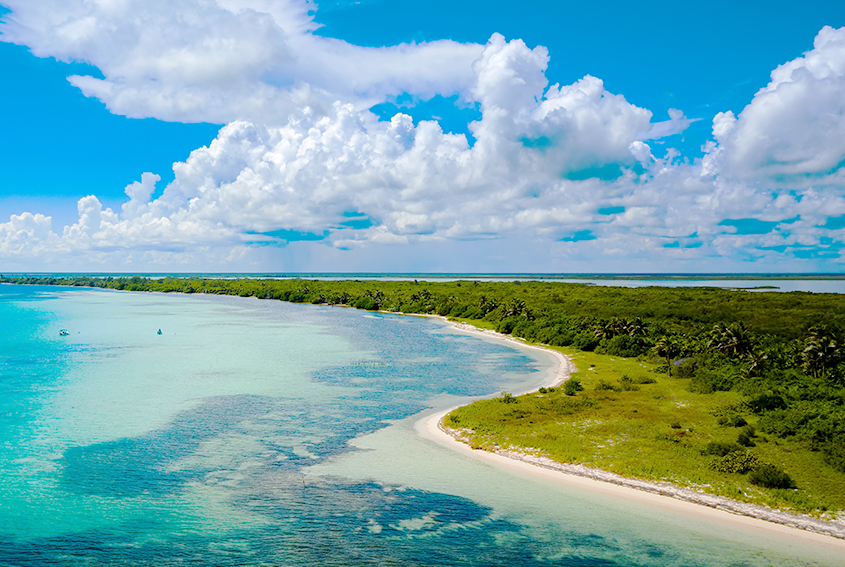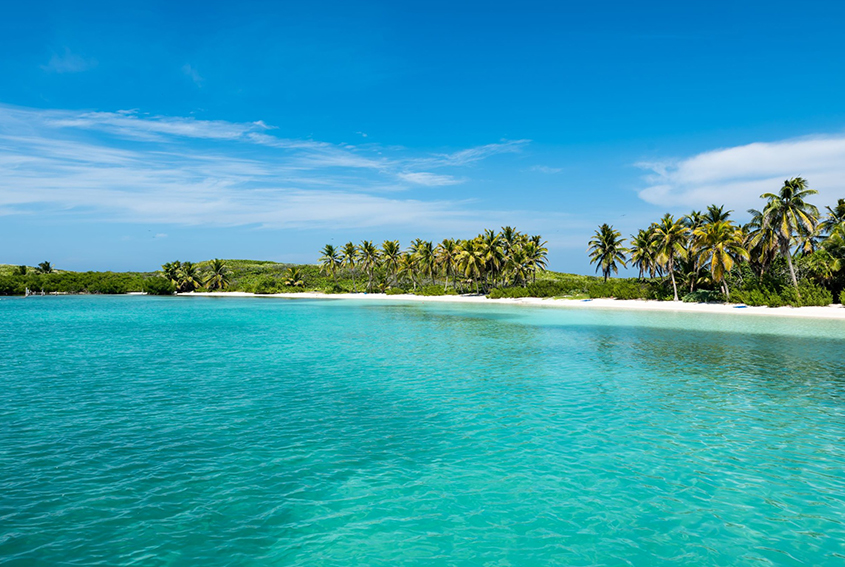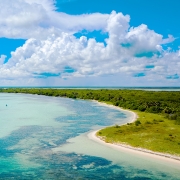Whatever the season, Yucatan Peninsula’s wild areas call nature lovers to catch a glimpse of families of spider monkeys and coatimundis in the jungle, crocodiles and manatees in the wetlands, and a wealth of colorful bird species. Thomas More Travel offers eco tours to the biosphere reserves of Sian Ka’an, Contoy and Rio Lagartos.

Sian Ka’an Biosphere Reserve
Straddling northern and central Quintana Roo, this UNESCO World Heritage Site comprises 1.3 million acres of tropical forest, mangroves, Caribbean beaches and a 110-kilometer-stretch of coral reef. The biosphere reserve was established by government decree in 1986 to protect these fragile ecosystems.
Sian Ka’an is home to 103 different mammals including the jaguar, puma, ocelot, peccary, tapir, howler and spider monkeys, and the West Indian manatee. It has one of Mexico’s largest crocodile populations and is an important nesting area for sea turtles.
The reserve is also home to over 350 species of bird, and you are bound to notch up a respectable tally of sightings during a visit. Sixteen varieties of heron and egret – including the kuka or boat-billed heron, tiger, blue and green heron –can be seen in the mangroves, along with wood storks, ibis and roseate spoonbills. Flamingos are occasional visitors to the coastal lagoons. Migrant warblers, finches and hawks join year-round forest dwellers such as parrots, motmots and keel-billed toucans. The reserve also has a large breeding population of ospreys and protects a tiny colony of the rare jabiru stork, the largest bird in the Americas, in the wetlands.

Contoy
A two-hour boat ride to the north of Cancun, the tiny desert island of Contoy is known as la isla de los pajaros or “the island of the birds and with good reason. A protected area since 1961, and declared a national park in 1998, it is a refuge for 150 species of native and migrant birds, including one of the largest populations of brown pelicans in the Caribbean. Colonies of frigate birds, double crested cormorants and ten members of the heron family such as the great blue heron, snowy egret and the yellow-crowned night heron roost in the mangroves. During the winter months, the island is a refuge for migratory ducks, plovers, sandpipers, oystercatchers and other shore birds.

Rio Lagartos Biosphere Reserve
First stop during the fall for water and food for many exhausted migrant birds crossing the Gulf of Mexico, Ría Lagartos Reserve protects 60,348 hectares of mangroves, salt marshes, dunes and tropical forest that is home to jaguars, monkeys, crocodiles and 365 bird species, including thousands of Caribbean flamingos, North America’s largest nesting colony of these elegant birds.
There are so many flamingos that they paint the horizon pink in the lagoons and salt flats. Fishermen from the waterfront village of Río Lagartos offer boat trips along the ria or estuary and through the mangroves to the flamingo feeding grounds. In addition to the spectacle of watching flamingos taking wing, coming into land or feeding in the shallows, keep a lookout for flocks of white pelicans, skimmers, limpkins, plovers, reddish and snowy egrets, roseate spoonbills, peregrine falcons and kingfishers.
Thomas More Travel can help you organize trips to these destinations and many more in the Mexican Caribbean and Yucatan.

